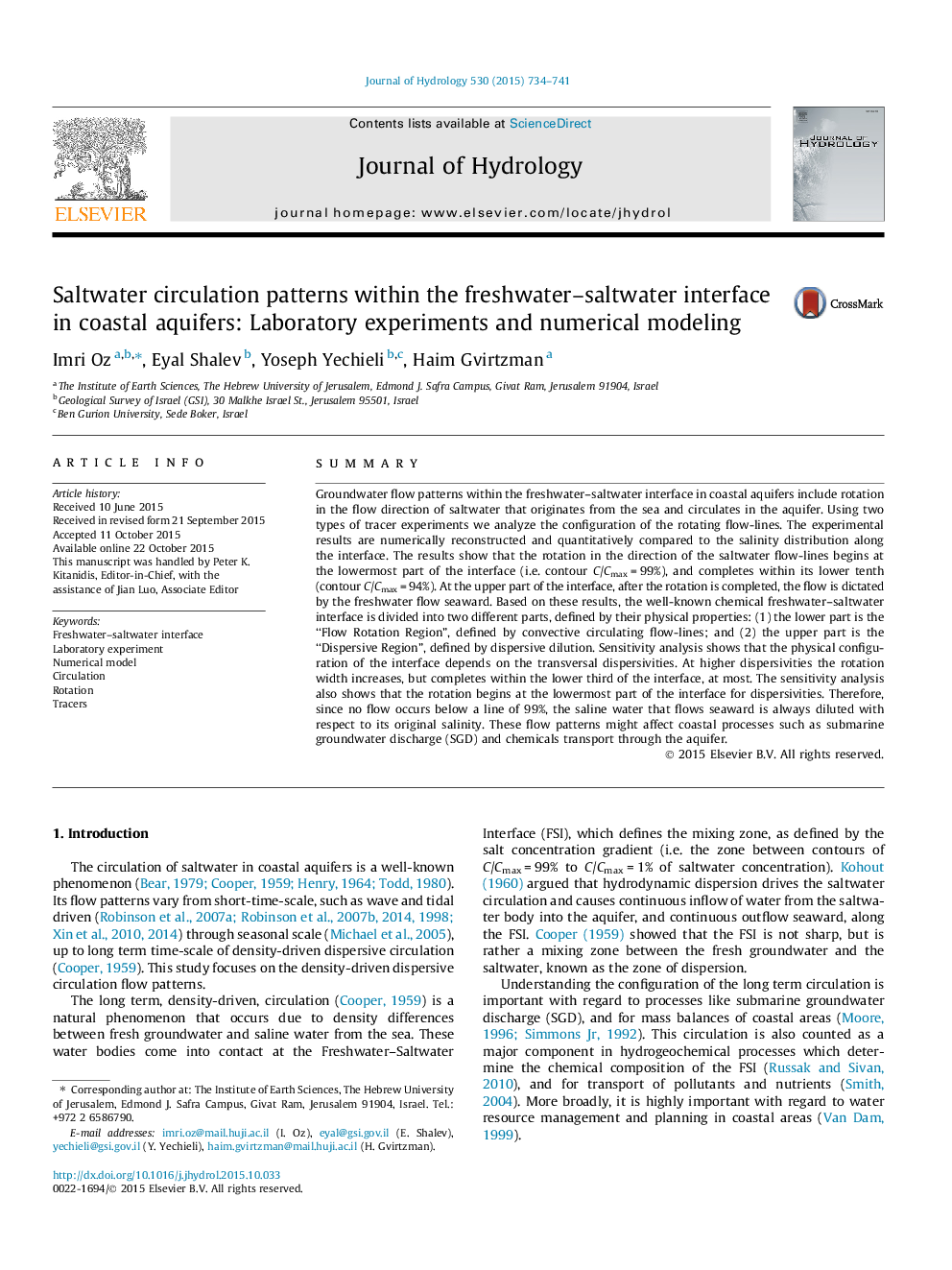| کد مقاله | کد نشریه | سال انتشار | مقاله انگلیسی | نسخه تمام متن |
|---|---|---|---|---|
| 6410273 | 1629921 | 2015 | 8 صفحه PDF | دانلود رایگان |
- The saltwater circulation flow within the fresh-saline interface is analyzed.
- Two types of tracer experiments are used, quantified by numerical simulations.
- The well-known chemical interface is divided based on its physical properties.
- The flow-lines rotation occurs in the lowest parts of the mixing zone.
- Saltwater which flow seaward are diluted with respect to their original salinity.
SummaryGroundwater flow patterns within the freshwater-saltwater interface in coastal aquifers include rotation in the flow direction of saltwater that originates from the sea and circulates in the aquifer. Using two types of tracer experiments we analyze the configuration of the rotating flow-lines. The experimental results are numerically reconstructed and quantitatively compared to the salinity distribution along the interface. The results show that the rotation in the direction of the saltwater flow-lines begins at the lowermost part of the interface (i.e. contour C/Cmax = 99%), and completes within its lower tenth (contour C/Cmax = 94%). At the upper part of the interface, after the rotation is completed, the flow is dictated by the freshwater flow seaward. Based on these results, the well-known chemical freshwater-saltwater interface is divided into two different parts, defined by their physical properties: (1) the lower part is the “Flow Rotation Region”, defined by convective circulating flow-lines; and (2) the upper part is the “Dispersive Region”, defined by dispersive dilution. Sensitivity analysis shows that the physical configuration of the interface depends on the transversal dispersivities. At higher dispersivities the rotation width increases, but completes within the lower third of the interface, at most. The sensitivity analysis also shows that the rotation begins at the lowermost part of the interface for dispersivities. Therefore, since no flow occurs below a line of 99%, the saline water that flows seaward is always diluted with respect to its original salinity. These flow patterns might affect coastal processes such as submarine groundwater discharge (SGD) and chemicals transport through the aquifer.
Journal: Journal of Hydrology - Volume 530, November 2015, Pages 734-741
